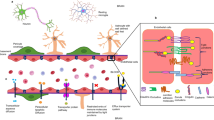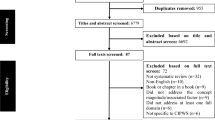Abstract
Purpose
Peripheral inflammation is frequent in schizophrenia and could play a role in the pathophysiology, prognosis, and persistence of psychotic symptomatology under treatment. We seek to determine the relationship between peripheral inflammation and brain SPECT perfusion in stabilized antipsychotic-treated outpatients with schizophrenia, and to determine whether such perfusion changes are correlated with persistent symptoms.
Methods
Highly sensitive C-reactive protein blood level (hs-CRP) and brain SPECT perfusion were assessed in 137 stabilized outpatients with schizophrenia. Whole-brain voxel-based associations were searched with SPM between SPECT perfusion and hs-CRP (correlation analysis to quantitative levels and between-group analysis according to a threshold of 3 mg/L). The identified clusters were secondarily correlated with clinical symptoms.
Results
After adjustment for age, sex, educational level, illness duration, antidepressant use, chlorpromazine equivalent dose, tobacco smoking and obesity, a negative correlation was found between hs-CRP level and the perfusion of 4 brain areas: the right inferior frontal gyrus, the right middle/superior temporal gyrus, the left superior parietal lobe, and the right postcentral/transverse temporal gyrus (p-voxel < 0.001, k > 80, uncorrected). Increased perfusion of the left amygdala was found in patients with hs-CRP ≥ 3 mg/L compared to those with hs-CRP levels < 3 mg/L. A negative correlation was found between perfusion of the right inferior frontal gyrus and the persistence of positive, negative, and excitement symptoms under antipsychotic treatment.
Conclusion
In stabilized patients with schizophrenia, peripheral inflammation is associated with brain perfusion changes that are correlated with the persistence of psychotic symptomatology.

Similar content being viewed by others
Availability of data and material
The SPECT data that support the findings are available from the corresponding author upon reasonable request.
Code availability
Not applicable.
References
Lally J, Ajnakina O, Di Forti M, Trotta A, Demjaha A, Kolliakou A, et al. Two distinct patterns of treatment resistance: clinical predictors of treatment resistance in first-episode schizophrenia spectrum psychoses. Psychol Med. 2016;46:3231–40.
Siskind D, Siskind V, Kisely S. Clozapine response rates among people with treatment-resistant schizophrenia: data from a systematic review and meta-analysis. Can J Psychiatry. 2017;62:772–7.
Schizophrenia Working Group of the Psychiatric Genomics Consortium. Biological insights from 108 schizophrenia-associated genetic loci. Nature. 2014;511:421–7.
van Kesteren CFMG, Gremmels H, de Witte LD, Hol EM, Van Gool AR, Falkai PG, et al. Immune involvement in the pathogenesis of schizophrenia: a meta-analysis on postmortem brain studies. Transl Psychiatry. 2017;7:e1075.
Sutterland AL, Fond G, Kuin A, Koeter MWJ, Lutter R, van Gool T, et al. Beyond the association. Toxoplasma gondii in schizophrenia, bipolar disorder, and addiction: systematic review and meta-analysis. Acta Psychiatr Scand. 2015;132:161–79.
Sukumar N, Sabesan P, Anazodo U, Palaniyappan L. Neurovascular uncoupling in schizophrenia: a bimodal meta-analysis of brain perfusion and glucose metabolism. Front Psychiatry. 2020;11:754.
Fond G, Lançon C, Auquier P, Boyer L. C-reactive protein as a peripheral biomarker in schizophrenia. An Updated Systematic Review. Front Psychiatry. 2018;9:392.
First M. Structured Clinical interview for the DSM-IV Axis I Disorders. American Psychiatric association. 1996.
Leucht S, Samara M, Heres S, Patel MX, Woods SW, Davis JM. Dose equivalents for second-generation antipsychotics: the minimum effective dose method. Schizophr Bull. 2014;40:314–26.
Kay SR, Fiszbein A, Opler LA. The positive and negative syndrome scale (PANSS) for schizophrenia. Schizophr Bull. 1987;13:261–76.
Addington D, Addington J, Maticka-Tyndale E, Joyce J. Reliability and validity of a depression rating scale for schizophrenics. Schizophr Res. 1992;6:201–8.
First MB, et al. Structured clinical interview for DSM-IV-TR axis I disorders, research version, patient edition. (SCID-I/P). New York: Biometrics Research, New York State Psychiatric Institute. 2002.
Mediterranean WHORO for the E. Clinical guidelines for the management of hypertension. 2005 [cited 2021 Jul 19]. Available from: https://apps.who.int/iris/handle/10665/119738
World Health Organization, International Diabetes Federation. Definition and diagnosis of diabetes mellitus and intermediate hyperglycaemia: report of a WHO/IDF consultation. 2006 [cited 2021 Jul 19]. Available from: http://www.who.int/diabetes/publications/diagnosis_diabetes2006/en/
Meyer JH, Cervenka S, Kim M-J, Kreisl WC, Henter ID, Innis RB. Neuroinflammation in psychiatric disorders: PET imaging and promising new targets. Lancet Psychiatry. 2020;7:1064–74.
Marques TR, Ashok AH, Pillinger T, Veronese M, Turkheimer FE, Dazzan P, et al. Neuroinflammation in schizophrenia: meta-analysis of in vivo microglial imaging studies. Psychol Med. 2019;49:2186–96.
Pollak TA, Drndarski S, Stone JM, David AS, McGuire P, Abbott NJ. The blood-brain barrier in psychosis. Lancet Psychiatry. 2018;5:79–92.
Fraguas D, Díaz-Caneja CM, Ayora M, Hernández-Álvarez F, Rodríguez-Quiroga A, Recio S, et al. Oxidative stress and inflammation in first-episode psychosis: a systematic review and meta-analysis. Schizophr Bull. 2019;45:742–51.
Corcoran CM, Carrillo F, Fernández-Slezak D, Bedi G, Klim C, Javitt DC, et al. Prediction of psychosis across protocols and risk cohorts using automated language analysis. World Psychiatry. 2018;17:67–75.
Sprengelmeyer R, Rausch M, Eysel UT, Przuntek H. Neural structures associated with recognition of facial expressions of basic emotions. Proc Biol Sci. 1998;265:1927–31.
Martin D, Croft J, Pitt A, Strelchuk D, Sullivan S, Zammit S. Systematic review and meta-analysis of the relationship between genetic risk for schizophrenia and facial emotion recognition. Schizophr Res. 2020;218:7–13.
Potkin SG, Kane JM, Correll CU, Lindenmayer J-P, Agid O, Marder SR, et al. The neurobiology of treatment-resistant schizophrenia: paths to antipsychotic resistance and a roadmap for future research. NPJ Schizophr. 2020;6:1.
Çakici N, van Beveren NJM, Judge-Hundal G, Koola MM, Sommer IEC. An update on the efficacy of anti-inflammatory agents for patients with schizophrenia: a meta-analysis. Psychol Med. 2019;49:2307–19.
Dantzer R, Walker AK. Is there a role for glutamate-mediated excitotoxicity in inflammation-induced depression? J Neural Transm. 2014;121:925–32.
Ho NF, Li Hui Chong P, Lee DR, Chew QH, Chen G, Sim K. The amygdala in schizophrenia and bipolar disorder: a synthesis of structural MRI, diffusion tensor imaging, and resting-state functional connectivity findings. Harv Rev Psychiatry. 2019;27:150–64.
Tawakol A, Ishai A, Takx RA, Figueroa AL, Ali A, Kaiser Y, et al. Relation between resting amygdalar activity and cardiovascular events: a longitudinal and cohort study. Lancet. 2017;389:834–45.
Samaras K, Correll CU, Curtis J. Premature mortality and schizophrenia-the need to heal right from the start. JAMA Psychiatry. 2016;73:535–6.
Lee EE, Hong S, Martin AS, Eyler LT, Jeste DV. Inflammation in schizophrenia: cytokine levels and their relationships to demographic and clinical variables. Am J Geriatr Psychiatry. 2017;25:50–61.
North HF, Bruggemann J, Cropley V, Swaminathan V, Sundram S, Lenroot R, et al. Increased peripheral inflammation in schizophrenia is associated with worse cognitive performance and related cortical thickness reductions. Eur Arch Psychiatry Clin Neurosci. 2021;271:595–607.
Tsai S-Y, Sajatovic M, Hsu J-L, Chung K-H, Chen P-H, Huang Y-J. Body mass index, residual psychotic symptoms, and inflammation associated with brain volume reduction in older patients with schizophrenia. Int J Geriatr Psychiatry. 2020;35:728–36.
Fond G, Faugere M, Richieri R, Cermolacce M, Korchia T, Micoulaud-Franchi JA, et al. Depressive symptoms and chronic peripheral inflammation are associated with impaired functional remission in schizophrenia independently of psychotic remission. J Affect Disord. 2021;280:267–71.
Bora E. Peripheral inflammatory and neurotrophic biomarkers of cognitive impairment in schizophrenia: a meta-analysis. Psychol Med. 2019;49:1971–9.
Fond G, Resseguier N, Schürhoff F, Godin O, Andrianarisoa M, Brunel L, et al. Relationships between low-grade peripheral inflammation and psychotropic drugs in schizophrenia: results from the national FACE-SZ cohort. Eur Arch Psychiatry Clin Neurosci. 2017;268:541–53.
Author information
Authors and Affiliations
Corresponding author
Ethics declarations
Ethics approval
The retrospective observations required no ethical approval requirement other than informed consent.
Informed consent
Informed consent was obtained from all individual participants included in the study.
Conflict of interest
The authors declare no competing interests.
Additional information
Publisher’s note
Springer Nature remains neutral with regard to jurisdictional claims in published maps and institutional affiliations.
This article is part of the Topical Collection on Neurology.
Rights and permissions
About this article
Cite this article
Fond, G., Garosi, A., Faugere, M. et al. Peripheral inflammation is associated with brain SPECT perfusion changes in schizophrenia. Eur J Nucl Med Mol Imaging 49, 905–912 (2022). https://doi.org/10.1007/s00259-021-05529-3
Received:
Accepted:
Published:
Issue Date:
DOI: https://doi.org/10.1007/s00259-021-05529-3




